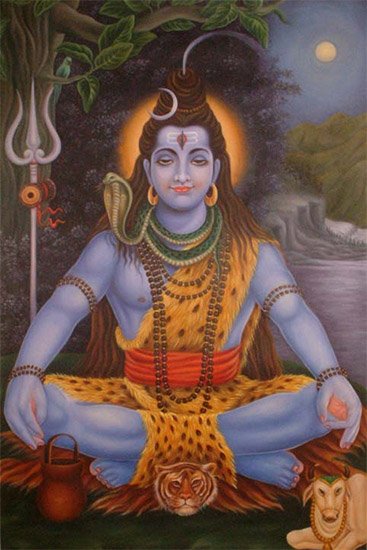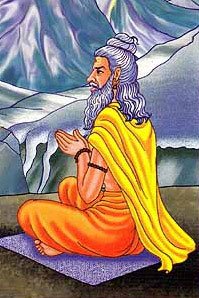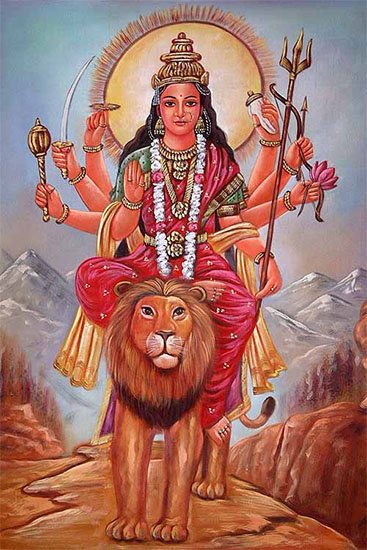Hakini, Hākinī, Hākiṉi: 5 definitions
Introduction:
Hakini means something in Hinduism, Sanskrit, Tamil. If you want to know the exact meaning, history, etymology or English translation of this term then check out the descriptions on this page. Add your comment or reference to a book if you want to contribute to this summary article.
In Hinduism
Shaivism (Shaiva philosophy)
Source: Wisdom Library: Kubjikāmata-tantraHākinī (हाकिनी):—Name of one of the eight female deities (yoginīs) of the Yoginīcakra, according to tantric sources such as the Śrīmatottara-tantra and the Gorakṣa-saṃhita. In other tantric sources, such as the kubjikāmata-tantra, she is identified as Yakṣiṇī. She is also mentioned as a similarly positioned yoginī in the Kulārṇava-tantra and the Ṣaṭcakranirūpaṇa where she forms part of a group of six or seven such female deities. The male counterpart of Hākinī is the Bhairava named Kādya, who should be visualized mentally.
Hākinī (and the other eight yoginīs) arise forth from the body of the Bhairava named Saṃvarta, who is described as a furious deity (mahāraudra) with various fearsome characteristics. During worship, She is to be placed in a petal facing north-west. Hākinī has the head of a tiger (vyāghra) according to the Śrīmatottara-tantra, or the head of a bear (ṛkṣa) according to the Kulārṇava-tantra. She has eight arms and is addicted to semen (śukra). Her colour is white (kundavarṇa, ‘having the colour of jasmine’).
Source: archive.org: Indian Historical Quarterly Vol. 7 (shaivism)Hākinī (हाकिनी).—The Ḍākinīs, Rākiṇīs, Lākinīs, [Kākinīs?] Śākinīs and Hākinīs are mentioned as the female energies (Śaktis) of the Tantrik deities respectively called Ḍāmeśvaranātha, Rāmeśvaranātha, Lāmeśvaranātha, Kākeśvaranātha, Śāmeśvaranātha, and Hāmeśvaranātha who together with their Śaktis, form mystic groups designated under the mnemonic ḍa ra la ka śa ha. The Lord of Lāmā is here called Lāmeśvara.

Shaiva (शैव, śaiva) or Shaivism (śaivism) represents a tradition of Hinduism worshiping Shiva as the supreme being. Closely related to Shaktism, Shaiva literature includes a range of scriptures, including Tantras, while the root of this tradition may be traced back to the ancient Vedas.
Purana and Itihasa (epic history)
Source: Cologne Digital Sanskrit Dictionaries: The Purana IndexHākinī (हाकिनी).—A Śakti in the Kiricakra.*
- * Brahmāṇḍa-purāṇa IV. 20. 15; 44. 91.

The Purana (पुराण, purāṇas) refers to Sanskrit literature preserving ancient India’s vast cultural history, including historical legends, religious ceremonies, various arts and sciences. The eighteen mahapuranas total over 400,000 shlokas (metrical couplets) and date to at least several centuries BCE.
Shaktism (Shakta philosophy)
Source: Google Books: ManthanabhairavatantramHākinī (हाकिनी) is the name of a Yoginī associated with Oḍḍiyāna, one of the sacred seats (pīṭha), according to the Manthānabhairavatantra, a vast sprawling work that belongs to a corpus of Tantric texts concerned with the worship of the goddess Kubjikā.—The main topic of chapter 35 of the Kumārikākhaṇḍa is the projection of the seats into the Six Wheels of the subtle body, each of which is governed by a Yoginī [i.e., Hākinī, Śākinī]. However, although placing them in pairs in each seat implies this simple linear development of the Wheels from the three seats, two by two from each one, the correspondences are soon skewed. Further ahead in chapter 35, the Wheels (cakra) in the body are again presented in relation to the sacred seats. But there, without any apparent reason, the seats have again become the standard four. Moreover, although the text names only four seats, it refers to them as six.

Shakta (शाक्त, śākta) or Shaktism (śāktism) represents a tradition of Hinduism where the Goddess (Devi) is revered and worshipped. Shakta literature includes a range of scriptures, including various Agamas and Tantras, although its roots may be traced back to the Vedas.
Languages of India and abroad
Sanskrit dictionary
Source: Cologne Digital Sanskrit Dictionaries: Monier-Williams Sanskrit-English DictionaryHākinī (हाकिनी):—f. a [particular] female demon (cf. ḍākinī and śākinī), [Tantrasāra]
Sanskrit, also spelled संस्कृतम् (saṃskṛtam), is an ancient language of India commonly seen as the grandmother of the Indo-European language family (even English!). Closely allied with Prakrit and Pali, Sanskrit is more exhaustive in both grammar and terms and has the most extensive collection of literature in the world, greatly surpassing its sister-languages Greek and Latin.
See also (Relevant definitions)
Starts with: Hakini Mudra.
Ends with: Dhakini, Patakini, Rajashakini, Sakini, Sthulashakini.
Full-text (+3): Sakini, Shameshvaranatha, Dakini, Hameshvaranatha, Lakini, Rakini, Dameshvaranatha, Kakeshvaranatha, Kakini, Rameshvaranatha, Lameshvaranatha, Yakshini, Mantrakosha, Adhyushta, Shivasakalapura, Bhagavatihridaya, Divyakuta, Shivasakala, Nigrahashatka, Shadnigraha.
Relevant text
Search found 5 books and stories containing Hakini, Hākinī, Hākiṉi; (plurals include: Hakinis, Hākinīs, Hākiṉis). You can also click to the full overview containing English textual excerpts. Below are direct links for the most relevant articles:
Cidgaganacandrika (study) (by S. Mahalakshmi)
Verse 84 [Gurukrama] < [Chapter 3 - Third Vimarśa]
Shat-cakra-nirupana (the six bodily centres) (by Arthur Avalon)
Lalitopakhyana (Lalita Mahatmya) (by G.V. Tagare)
The Skanda Purana (by G. V. Tagare)
Chapter 20 - Description of Dharā Kṣetra < [Section 2 - Dharmāraṇya-khaṇḍa]
Serpent Power (Kundalini-shakti), Introduction (by Arthur Avalon)